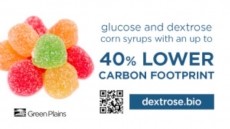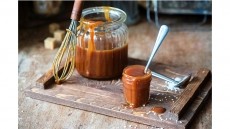EFSA condemns Red 2G colour as carcinogen
2G (E128), the first under its reassessment programme and a strong
indication of a sea-change in the use of additives in processed
foods.
Red 2G was one of the first food additives to be approved under European legislation, and an ADI (accepted daily intake) of 20mg/kg was granted in 1981 for its use in breakfast sausages with a minimum cereal content of six per cent and in burger meat with a minimum vegetable and/or cereal content of four per cent.
The European Food Standards Authority (EFSA) announced last December that it is reassessing all food additives previously approved for use in the EU since new science has emerged that could cast doubt over their safety.
In the case of Red 2G, that certainly seems the case.
It has been shown to convert in the body to a substance called aniline which, based on several animal studies published since 1999, EFSA's panel said should be considered as a carcinogen for which a genotoxic mechanism cannot be excluded.
The upshot is that EFSA has withdrawn the ADI for
Red 2G.
A spokesperson told FoodNavigator.com that the authority is responsible for the risk assessment, but a legal decision on whether or not Red 2G may be used is down to the European Commission and member states.
Although Red 2G's future looks grim, EFSA allowed one small ray of hope.
"The panel concluded that the tumour inducing mechanism of aniline be further elucidated, show to be threshold and/or its relevance for man discounted, Red 2G could be re-evaluated once more," said the panel.
Nonetheless, it would be prudent for any food companies using its colour - or any other additive approved in the early days - to reconsider their formulation.
There is significant consumer mistrust of additives, and the conclusions on Red 2G could serve to stir this further.
However while all E-numbers are bundled together in the consumer mindset as 'bad' and 'chemical', natural food-derived colours are also assigned E-numbers and are therefore eyed with equal suspicion.
When complete, the reassessment should serve to quell concerns.
However for the moment there is a strong movement away from E-numbers by food manufacturers and retailers as they seek to deliver products with 'clean labels'.
For instance, UK supermarket ASDA announced in May that it is removing artificial colours and flavours from all of its private label food and beverage products.
The EFSA spokesperson told Food Navigator.com that around 45 colours are being reassessed - both natural and synthetic.
The authority is starting with colours as these dominated the first spate of approvals.
It expects to complete the process by end of 2008.
In the meantime, a study by researchers at Southampton University for the UK's Food Standards Agency concluded that several artificial additives increase the risk of hyperactivity and unruly behaviour in young children.
The suspects include sunset yellow (E110), allura red AC (E129) and the preservative sodium benzoate.

















